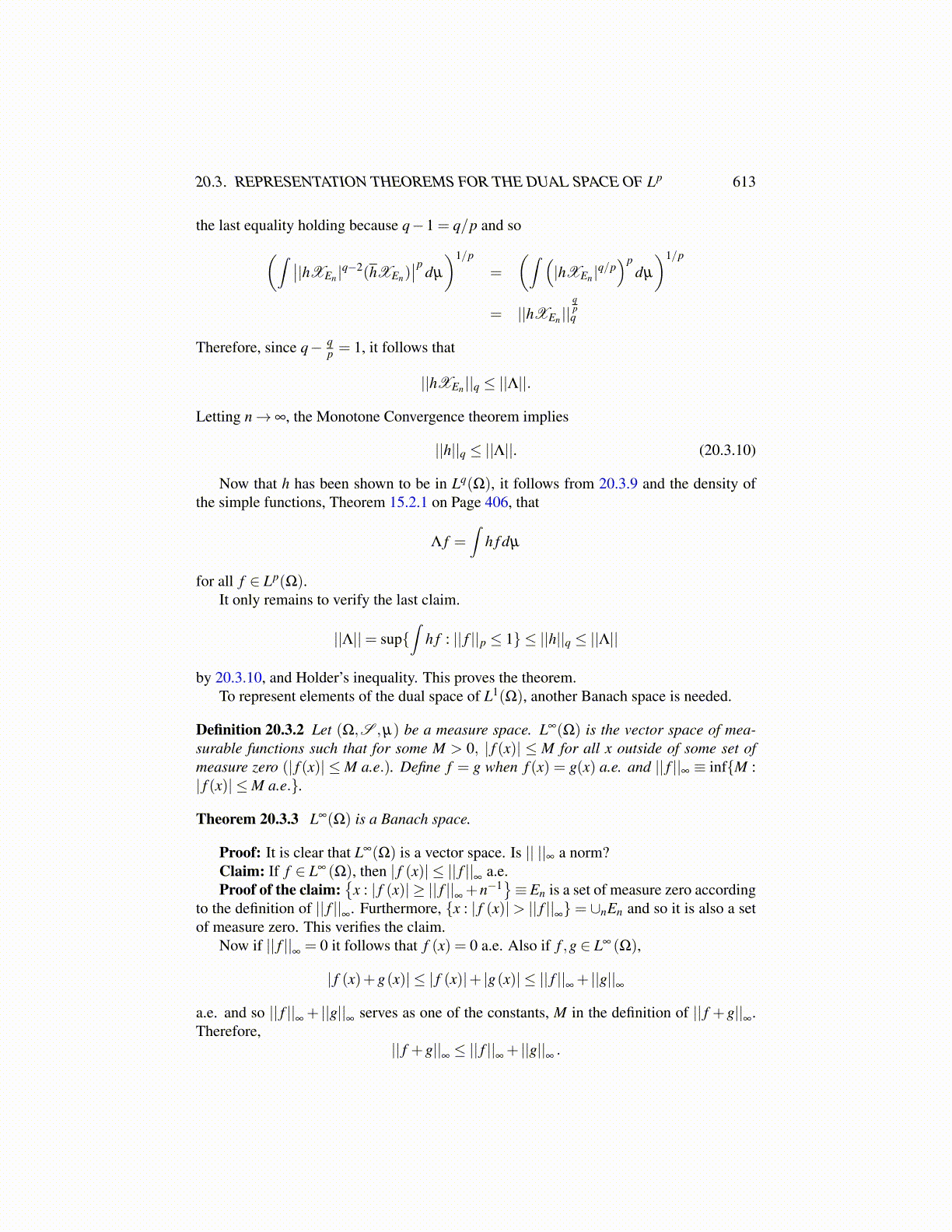
20.3. REPRESENTATION THEOREMS FOR THE DUAL SPACE OF Lp 613
the last equality holding because q−1 = q/p and so(∫ ∣∣|hXEn |q−2(hXEn)∣∣p dµ
)1/p
=
(∫ (|hXEn |q/p
)pdµ
)1/p
= ||hXEn ||qpq
Therefore, since q− qp = 1, it follows that
||hXEn ||q ≤ ||Λ||.
Letting n→ ∞, the Monotone Convergence theorem implies
||h||q ≤ ||Λ||. (20.3.10)
Now that h has been shown to be in Lq(Ω), it follows from 20.3.9 and the density ofthe simple functions, Theorem 15.2.1 on Page 406, that
Λ f =∫
h f dµ
for all f ∈ Lp(Ω).It only remains to verify the last claim.
||Λ||= sup{∫
h f : || f ||p ≤ 1} ≤ ||h||q ≤ ||Λ||
by 20.3.10, and Holder’s inequality. This proves the theorem.To represent elements of the dual space of L1(Ω), another Banach space is needed.
Definition 20.3.2 Let (Ω,S ,µ) be a measure space. L∞(Ω) is the vector space of mea-surable functions such that for some M > 0, | f (x)| ≤ M for all x outside of some set ofmeasure zero (| f (x)| ≤M a.e.). Define f = g when f (x) = g(x) a.e. and || f ||∞ ≡ inf{M :| f (x)| ≤M a.e.}.
Theorem 20.3.3 L∞(Ω) is a Banach space.
Proof: It is clear that L∞(Ω) is a vector space. Is || ||∞ a norm?Claim: If f ∈ L∞ (Ω), then | f (x)| ≤ || f ||
∞a.e.
Proof of the claim:{
x : | f (x)| ≥ || f ||∞+n−1
}≡ En is a set of measure zero according
to the definition of || f ||∞
. Furthermore, {x : | f (x)|> || f ||∞}= ∪nEn and so it is also a set
of measure zero. This verifies the claim.Now if || f ||
∞= 0 it follows that f (x) = 0 a.e. Also if f ,g ∈ L∞ (Ω),
| f (x)+g(x)| ≤ | f (x)|+ |g(x)| ≤ || f ||∞+ ||g||
∞
a.e. and so || f ||∞+ ||g||
∞serves as one of the constants, M in the definition of || f +g||
∞.
Therefore,|| f +g||
∞≤ || f ||
∞+ ||g||
∞.